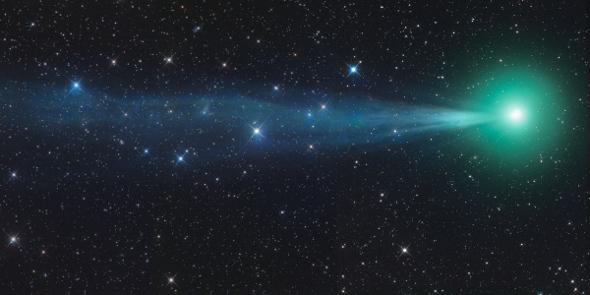https://www.cnn.com/2015/10/25/us/comet-lovejoy-spews-alcohol/index.html

[h=1]Sweet comet is spewing alcohol across space[/h](CNN)It's named Comet Lovejoy, and the space rock could certainly make some people on Earth joyful: It's pumping out as much alcohol as in 500 bottles of wine every second, according to Nicolas Biver of the Paris Observatory in France.
The discovery marks the first time that ethyl alcohol, the same type in alcoholic beverages, has been observed in a comet.
The comet also is sprinkling out a type of sugar, according to the new observations by Biver, the lead author of a paper that published October 23 in Science Advances.
Biver's team found 21 organic molecules coming from the comet. NASA said in a news release that the finding "adds to the evidence that comets could have been a source of the complex organic molecules necessary for the emergence of life" on Earth.



